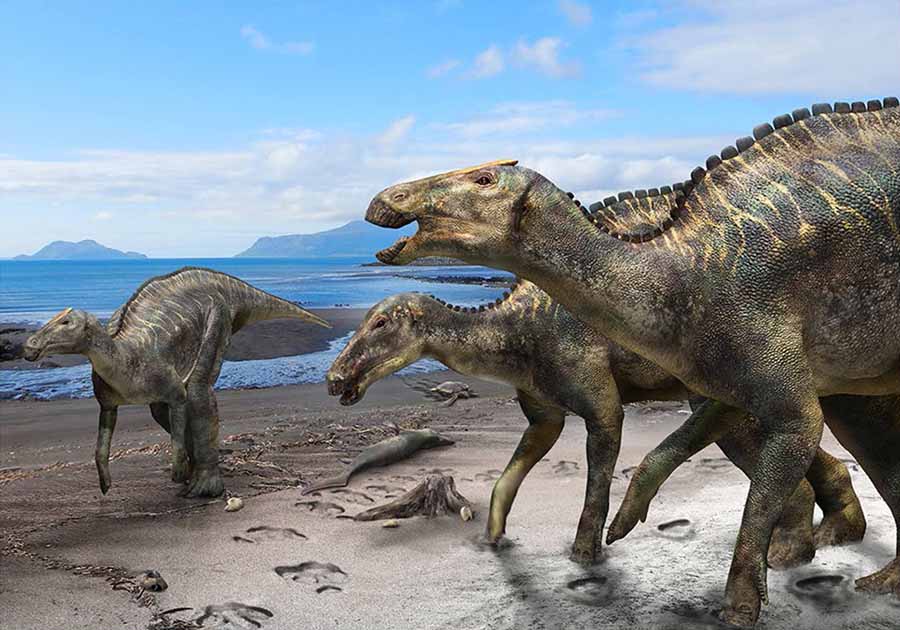New Duck-Billed Dinosaur Unveiled: Kamuysaurus japonicus

The newly-identified dinosaur, named Kamuysaurus japonicus, lived some 72 million years ago (Cretaceous period).
It belongs to the family Hadrosauridae, one of the most successful groups of herbivorous dinosaurs in the Late Cretaceous period.
The fossil remains of these dinosaurs are common in the uppermost Cretaceous deposits in the supercontinent Laurasia (North America, Asia, and Europe) and some areas of the supercontinent Gondwana (South America and Antarctica).
The nearly complete skeleton of Kamuysaurus japonicus was recovered from the outer shelf deposits of the Upper Cretaceous Hakobuchi Formation in Hobetsu area of Mukawa town in Hokkaido in 2013.
It is the first nearly complete mid-to-large sized dinosaur skeleton from Japan.

The specimen was analyzed by paleontologists from Japan, the United States and Mongolia who concluded the dinosaur belonged to the hadrosaurid clade Edmontosaurini and was closely related to other hadrosaurids from the Far East such as Laiyangosaurus from China and Kerberosaurus from Siberia.
“The individual was an adult aged 9 or older, measured 26 feet (8 m) long and weighed 4 or 5.3 tons — depending on whether it was walking on two or four legs respectively — when it was alive,” said lead author Professor Yoshitsugu Kobayashi from the Hokkaido University Museum and colleagues.
The researchers also identified a number of unique features, including a small crest on the skull and a short row of neural spines that point forwards.
“We found that Kamuysaurus japonicus has three unique characteristics that are not shared by other dinosaurs in the Edmontosaurini clade: the low position of the cranial bone notch, the short ascending process of the jaw bone, and the anterior inclination of the neural spines of the sixth to twelfth dorsal vertebrae,” they explained.

According to the team, the discovery of Kamuysaurus japonicus in a marine-influenced environment is rare for hadrosaurids and contributes to understanding of their diversity in these environments.
“There is a possibility that the ancestors of the Hadrosauridae family and its subfamilies, Hadrosaurinae and Lambeosaurinae, preferred to inhabit areas near the ocean, suggesting the coastline environment was an important factor in the diversification of the hadrosaurids in its early evolution, especially in North America,” the scientists said.
The discovery is reported in a paper in the journal Scientific Reports.
_____
Yoshitsugu Kobayashi et al. 2019. A New Hadrosaurine (Dinosauria: Hadrosauridae) from the Marine Deposits of the Late Cretaceous Hakobuchi Formation, Yezo Group, Japan. Scientific Reports 9, article number: 12389; doi: 10.1038/s41598-019-48607-1
Source: www.sci-news.com








